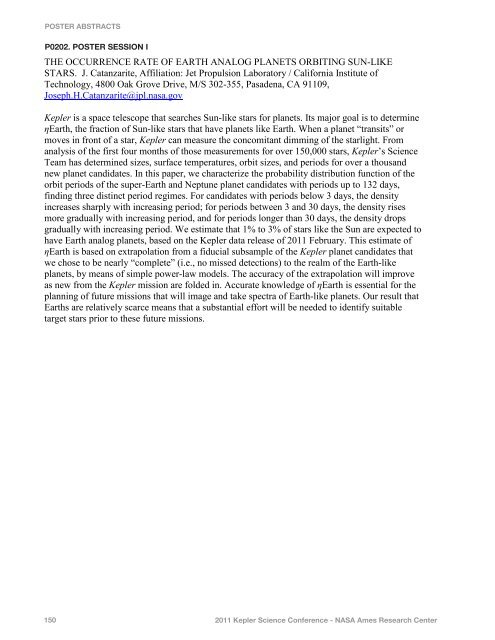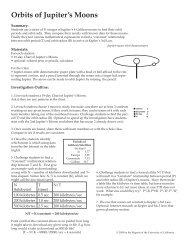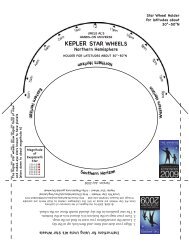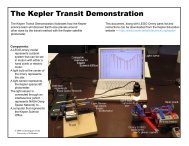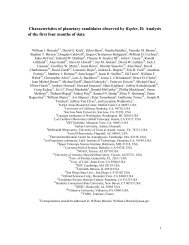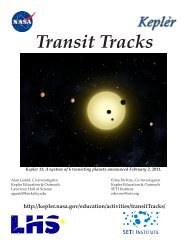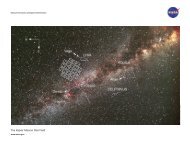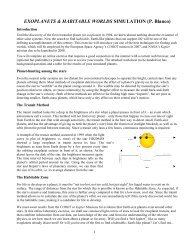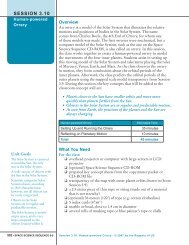Poster Abstracts - Kepler - NASA
Poster Abstracts - Kepler - NASA
Poster Abstracts - Kepler - NASA
- No tags were found...
You also want an ePaper? Increase the reach of your titles
YUMPU automatically turns print PDFs into web optimized ePapers that Google loves.
POSTER ABSTRACTSP0202. POSTER SESSION ITHE OCCURRENCE RATE OF EARTH ANALOG PLANETS ORBITING SUN-LIKESTARS. J. Catanzarite, Affiliation: Jet Propulsion Laboratory / California Institute ofTechnology, 4800 Oak Grove Drive, M/S 302-355, Pasadena, CA 91109,Joseph.H.Catanzarite@jpl.nasa.gov<strong>Kepler</strong> is a space telescope that searches Sun-like stars for planets. Its major goal is to determineηEarth, the fraction of Sun-like stars that have planets like Earth. When a planet “transits” ormoves in front of a star, <strong>Kepler</strong> can measure the concomitant dimming of the starlight. Fromanalysis of the first four months of those measurements for over 150,000 stars, <strong>Kepler</strong>’s ScienceTeam has determined sizes, surface temperatures, orbit sizes, and periods for over a thousandnew planet candidates. In this paper, we characterize the probability distribution function of theorbit periods of the super-Earth and Neptune planet candidates with periods up to 132 days,finding three distinct period regimes. For candidates with periods below 3 days, the densityincreases sharply with increasing period; for periods between 3 and 30 days, the density risesmore gradually with increasing period, and for periods longer than 30 days, the density dropsgradually with increasing period. We estimate that 1% to 3% of stars like the Sun are expected tohave Earth analog planets, based on the <strong>Kepler</strong> data release of 2011 February. This estimate ofηEarth is based on extrapolation from a fiducial subsample of the <strong>Kepler</strong> planet candidates thatwe chose to be nearly “complete” (i.e., no missed detections) to the realm of the Earth-likeplanets, by means of simple power-law models. The accuracy of the extrapolation will improveas new from the <strong>Kepler</strong> mission are folded in. Accurate knowledge of ηEarth is essential for theplanning of future missions that will image and take spectra of Earth-like planets. Our result thatEarths are relatively scarce means that a substantial effort will be needed to identify suitabletarget stars prior to these future missions.1502011 <strong>Kepler</strong> Science Conference - <strong>NASA</strong> Ames Research Center


